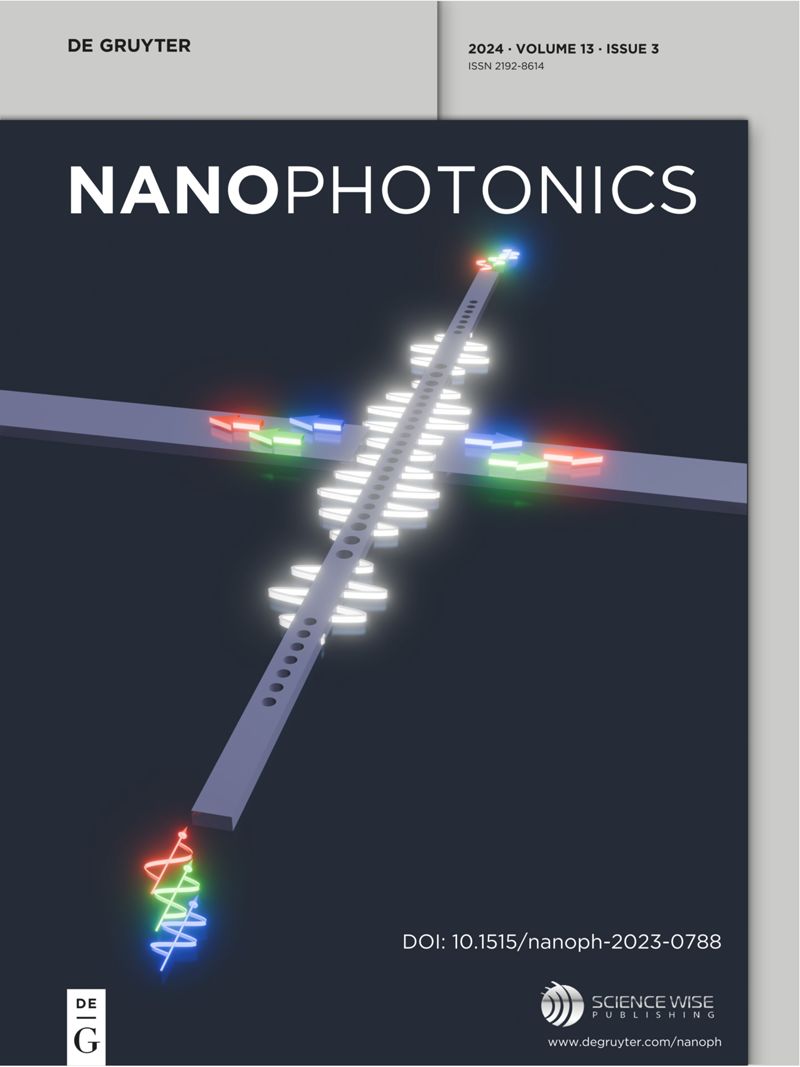太赫兹纳米镜提取二硫化钼纳米带的介电常数
IF 6.5
2区 物理与天体物理
Q1 MATERIALS SCIENCE, MULTIDISCIPLINARY
引用次数: 0
摘要
采用基于散射型扫描探针的太赫兹纳米显微镜研究了高质量二硫化钼纳米带的纳米光学特性。纳米带由多层核心组成,由单层边缘包围。采用探针-样品相互作用的扩展有限偶极子模型,通过最小化程序从实验时域测量中提取了覆盖0.6-1.6 THz范围的无特征复介电常数谱。纳米带的实空间映射揭示了局部介电常数的变化,直到仪器限制的分辨率,约为30 nm。聚类分析统计地确定了较低视介电常数的区域,我们将其归因于纳米带边缘的高曲率,这导致了局部材料应变的增加或测量信号中与地形诱发的测量伪影的串扰。纳米带的核心包含两个区域,它们在复介电常数空间中遵循紧密分布但略有偏移的高斯统计量,两个分布的实部平均值均在5.4左右,与文献中报道的MoS2薄膜静态介电常数值一致。我们的研究结果表明,纳米带在纳米尺度上表现出适度的介电变化,这可以通过异质掺杂或局部缺陷密度的变化来解释。我们相信我们的方法可以用于其他低维半导体材料系统中介电无序的直接实空间测量。本文章由计算机程序翻译,如有差异,请以英文原文为准。
Dielectric permittivity extraction of MoS2 nanoribbons using THz nanoscopy
The nanoscale optical properties of high-quality MoS2 nanoribbons are investigated using THz nanoscopy based on a scattering-type scanning probe. The nanoribbons comprise a multilayer core, surrounded by monolayer edges. A featureless complex permittivity spectrum covering the range 0.6–1.6 THz is extracted from experimental time-domain measurements through a minimization procedure, adopting an extended finite-dipole model of the probe–sample interaction. Real-space mapping of the nanoribbon reveals variations in the local permittivity down to the instrument-limited resolution, on the order of 30 nm. Clustering analysis statistically identifies regions of lower apparent permittivity that we attribute to a high curvature at the edges of the nanoribbon causing an increase in local material strain or cross-talk in the measured signal with topography-induced measurement artifacts. The core of the nanoribbon contains two regions that follow tightly distributed, but slightly shifted Gaussian statistics in complex permittivity space, with the real part mean of both distributions lying around 5.4 and compatible with literature values of the static permittivity of thin-film MoS2 reported previously. Our results show that the nanoribbons exhibit a modest degree of dielectric variation at the nanoscale that could be explained by heterogeneous doping or variations in the local defect density. We believe that our approach could be useful for the direct real-space measurement of dielectric disorder in other low-dimensional semiconducting material systems.
求助全文
通过发布文献求助,成功后即可免费获取论文全文。
去求助
来源期刊

Nanophotonics
NANOSCIENCE & NANOTECHNOLOGY-MATERIALS SCIENCE, MULTIDISCIPLINARY
CiteScore
13.50
自引率
6.70%
发文量
358
审稿时长
7 weeks
期刊介绍:
Nanophotonics, published in collaboration with Sciencewise, is a prestigious journal that showcases recent international research results, notable advancements in the field, and innovative applications. It is regarded as one of the leading publications in the realm of nanophotonics and encompasses a range of article types including research articles, selectively invited reviews, letters, and perspectives.
The journal specifically delves into the study of photon interaction with nano-structures, such as carbon nano-tubes, nano metal particles, nano crystals, semiconductor nano dots, photonic crystals, tissue, and DNA. It offers comprehensive coverage of the most up-to-date discoveries, making it an essential resource for physicists, engineers, and material scientists.
 求助内容:
求助内容: 应助结果提醒方式:
应助结果提醒方式:


